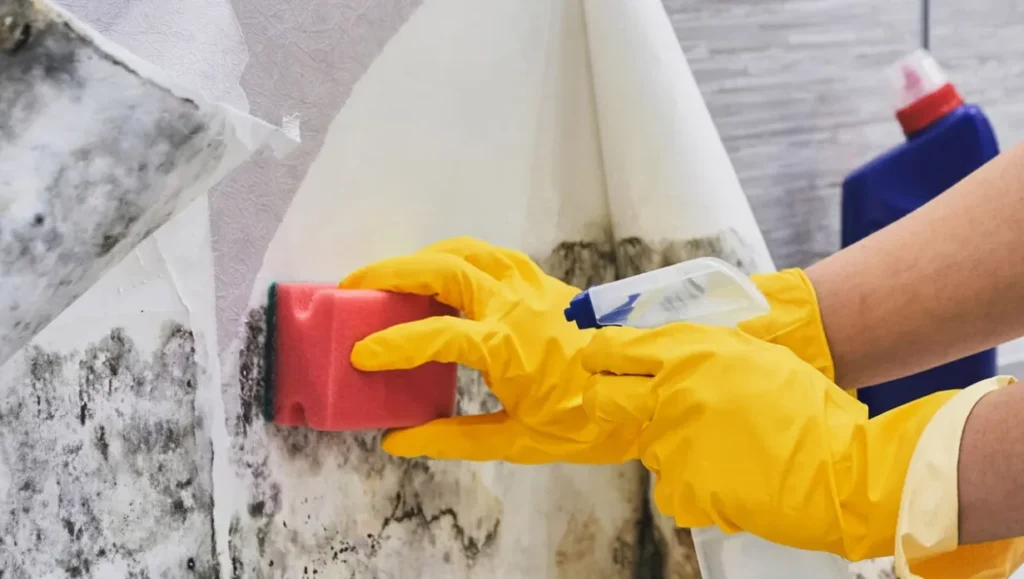Mold in the home is a common problem that many homeowners overlook until it becomes an issue. Unfortunately, mold can not only damage your property but also pose serious health risks, especially for vulnerable individuals such as children, the elderly, and those with respiratory conditions. Understanding how mold affects your health and taking steps to protect your family can make all the difference in maintaining a safe living environment. In this article, we will explore the health risks associated with mold, how to identify it, and provide practical tips for preventing and removing mold from your home.
The Health Risks of Mold Exposure
Mold thrives in damp, humid environments, often in areas such as bathrooms, kitchens, basements, and under sinks. When mold spores become airborne, they can easily be inhaled, leading to a range of health issues. The severity of the effects depends on the amount of mold, the type of mold, and the health of those exposed. Here’s how mold exposure can impact your health:
- Respiratory Problems: Mold spores can irritate the lungs and airways, causing coughing, sneezing, and a runny nose. In people with asthma or other respiratory conditions, mold exposure can trigger asthma attacks or worsen existing symptoms.
- Allergic Reactions: Mold can trigger allergic reactions such as skin rashes, itching, and watery eyes. People who are sensitive to mold may experience more severe reactions, including wheezing and difficulty breathing.
- Sinus Infections: Prolonged exposure to mold can lead to sinus congestion and infections. The spores can cause irritation in the nasal passages, leading to symptoms such as headaches, sinus pressure, and a stuffy nose.
- Headaches and Fatigue: Mold exposure can lead to chronic fatigue, headaches, and dizziness. Some people may feel constantly tired or experience difficulty concentrating due to mold-induced inflammation in the body.
- Increased Risk for Vulnerable Groups: Children, the elderly, and individuals with compromised immune systems are particularly vulnerable to mold’s health effects. Exposure to mold can lead to more serious health problems, including respiratory infections and more severe allergic reactions.
- Toxic Mold: Certain types of mold, such as Stachybotrys chartarum, are known as “toxic molds” and can produce mycotoxins that are harmful when inhaled. Exposure to toxic mold can lead to neurological issues, memory problems, and even immune system suppression in extreme cases.
Signs of Mold in Your Home
If you suspect that mold may be present in your home, there are several signs to look out for:
- Visible Mold: Mold can appear in various colors, including green, black, white, or yellow. It may grow on walls, ceilings, and floors, particularly in areas with high humidity.
- Musty Odor: A musty smell is often the first sign of a mold problem. Mold spores cause this odor, which can be noticeable in damp areas like bathrooms and basements.
- Water Damage: If you’ve experienced water leaks or flooding in your home, there’s a higher chance of mold growth. Check for water stains, peeling paint, or dampness on walls and ceilings.
- Health Symptoms: If your family members start experiencing unexplained respiratory issues, skin irritation, or allergic reactions, it could be a sign that mold is affecting your indoor air quality.
How to Prevent Mold in Your Home
Preventing mold growth is key to keeping your home healthy. Here are some simple steps you can take to minimize the risk:
- Control Humidity Levels: Mold thrives in moist environments, so controlling humidity in your home is crucial. Use dehumidifiers in areas prone to moisture, such as basements and bathrooms. Aim to keep indoor humidity levels below 60% to discourage mold growth.
- Ventilate Your Home: Proper ventilation can prevent moisture buildup. Open windows when possible, especially in areas like kitchens and bathrooms. Install exhaust fans to help reduce moisture, particularly in areas where steam can accumulate.
- Fix Leaks Quickly: Any leaks in pipes, roofs, or windows should be repaired as soon as possible. Water that seeps into walls or floors creates the perfect breeding ground for mold. Act quickly to prevent the problem from worsening.
- Clean and Dry Damp Areas: After any water-related incidents, such as spills or floods, make sure to clean and dry affected areas within 24-48 hours to prevent mold growth. Pay special attention to carpets, rugs, and upholstery, which can trap moisture.
- Use Mold-Resistant Products: Consider using mold-resistant paint, drywall, and insulation in areas that are prone to moisture. These materials are specifically designed to resist mold growth and can help protect your home in the long term.
How to Remove Mold Safely
If you discover mold in your home, it’s important to take the right steps to remove it. For small mold infestations, you can tackle the problem yourself by following proper cleaning guidelines. Wear protective gear such as gloves, a mask, and goggles to avoid exposure to mold spores.
For larger mold problems, it’s best to consult a professional. Mold remediation experts can assess the extent of the mold problem and safely remove it. The amount ofmold remediation can vary depending on the size of the affected area, but the investment is often worth it to ensure the safety and health of your family.
Conclusion
Mold in your home can have serious consequences for your health, but with proper prevention and prompt action, you can protect your family from its harmful effects. Regularly inspect your home for signs of mold, maintain proper ventilation, and address water damage quickly to keep mold at bay. If mold becomes a problem, don’t hesitate to seek professional help to ensure your home is safe and healthy for everyone.
